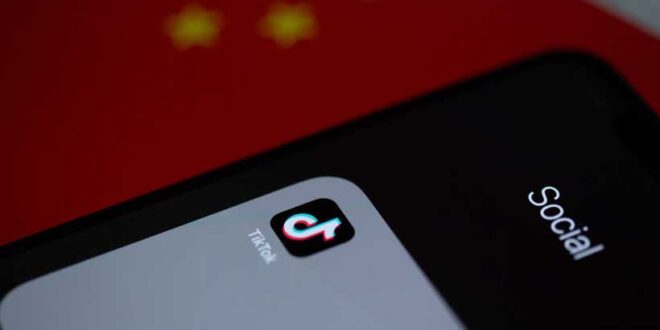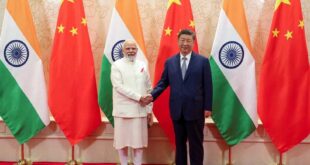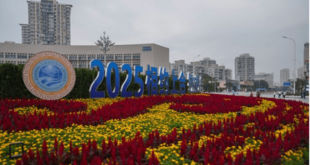The China-Pakistan Economic Corridor (CPEC), a $65 billion flagship initiative under China’s Belt and Road Initiative (BRI), is more than an infrastructure project—it is a geopolitical linchpin for Beijing’s ambitions in South Asia and beyond. Yet, this strategic endeavor faces a paradoxical threat: The Baloch Liberation Army (BLA), a militant group targeting Chinese interests, has weaponized TikTok, a Chinese-owned platform, to undermine CPEC and fuel anti-China sentiment. This duality highlights how even tools designed to project soft power can become vectors of destabilization when exploited by adversarial actors.
The BLA, a Baloch separatist group fighting for independence from Pakistan, views China as complicit in Islamabad’s alleged exploitation of Balochistan’s resources. Since 2018, the group has escalated attacks on CPEC projects, Chinese nationals, and symbols of Sino-Pakistani collaboration, such as the Karachi Stock Exchange (40% Chinese-owned) and the Gwadar Port. These attacks are not merely physical; they are part of a hybrid warfare strategy combining violence with digital propaganda. The BLA frames CPEC as a colonial project that displaces local communities, extracts resources, and entrenches Pakistani military repression.
The group’s propaganda often invokes historical grievances, such as the 2006 assassination of Baloch leader Nawab Akbar Bugti, to legitimize its resistance. Its messaging blends appeals for self-determination with accusations of Chinese complicity, declaring, “China has joined hands with the Pakistan Army to perpetrate brutality on our people”. This narrative resonates with marginalized Baloch youth, who face economic deprivation and perceive CPEC as benefiting outsiders.
TikTok’s algorithmic reach and weak content moderation have made it an unwitting accomplice in the BLA’s digital offensive. From 2015 to 2024, anti-CPEC videos on TikTok surged from 50 to over 1,200, amassing 35 million views in Balochistan alone. The BLA and affiliated groups like the Baloch Yakjehti Committee manipulate hashtags such as #StopCPEC, which trended over 500 times since 2018, reaching 15 million users. These campaigns coincide with critical phases of CPEC’s development, suggesting a coordinated effort to sabotage economic progress.
The platform’s design amplifies divisive content. TikTok’s algorithm prioritizes engagement over context, enabling extremist rhetoric to infiltrate feeds of impressionable users. In 2024, one in three TikTok users in Balochistan encountered anti-CPEC content, reinforcing narratives of Chinese exploitation. While TikTok positions itself as a neutral space, its susceptibility to algorithmic manipulation undermines China’s own investments. This paradox is stark: A Chinese app, subject to Beijing’s National Intelligence Law, is being exploited to destabilize China’s flagship foreign project.
The BLA’s digital warfare compounds physical threats to CPEC. Attacks like the 2023 ambush on a Chinese convoy in Gwadar and the 2024 Operation Herof—a wave of violence marking the 18th anniversary of Bugti’s death—demonstrate the group’s evolving capabilities. These operations are accompanied by sophisticated media campaigns on encrypted platforms like Telegram, where the BLA shares videos glorifying suicide bombers and mapping attack zones. Cross-platform dissemination ensures content leaks into mainstream social media, challenging counterterrorism efforts.
China’s response has been reactive. While Beijing urges Pakistan to enhance security, it has struggled to address the digital dimension. The BLA’s use of regional languages (Balochi, Brahvi) further complicates content moderation, as tech platforms lack linguistically trained moderators. Meanwhile, China’s reliance on CPEC as a gateway to the Indian Ocean and alternative to the Malacca Strait makes withdrawal unthinkable, despite rising risks.
Recommendations for Mitigation
To counter this threat, a multi-pronged approach is essential:
Collaborate with ByteDance to recalibrate TikTok’s algorithm, deprioritizing extremist content and banning hashtags like #StopCPEC.
Launch pro-CPEC digital initiatives featuring local influencers and economic experts to highlight job creation and infrastructure benefits.
Invest in AI tools and linguistically diverse moderators to detect and remove BLA-linked content in regional languages.
Establish a China-Pakistan tech task force to monitor and dismantle BLA networks on social media.
Criminalize digital warfare against CPEC under cyber laws and streamline bans on terrorist-linked accounts.
“The supreme art of war is to subdue the enemy without fighting.” — Sun Tzu.
China’s challenge lies in subduing the BLA’s digital insurgency without eroding TikTok’s global appeal. As hybrid warfare evolves, Beijing must reconcile its technological ambitions with the vulnerabilities they create. The stakes extend beyond CPEC: if a Chinese platform can be turned against its own interests, the implications for global digital diplomacy are profound. In this battlefield, algorithms are both weapons and weaknesses—a duality China can no longer afford to ignore.
The BLA’s exploitation of TikTok underscores a harsh reality: in the digital age, even tools of influence can become tools of sabotage. For China, safeguarding CPEC requires not just physical security but mastery over the narratives shaping its future.
 Geostrategic Media Political Commentary, Analysis, Security, Defense
Geostrategic Media Political Commentary, Analysis, Security, Defense





